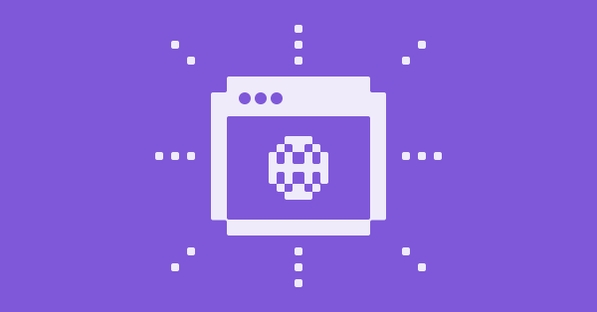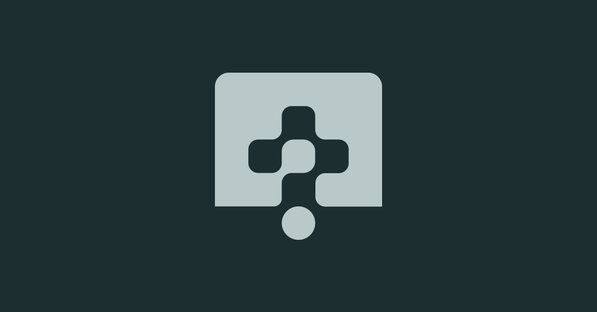eCommerce is a far cry from what it was only a few years ago, with customer expectations higher than ever.
Shoppers have demanded seamless omnichannel experiences for some time now, blistering site speeds, and the ability to innovate their site and services quickly to meet a rapidly evolving demand in the market from multiple directions.
But legacy monolithic architectures are struggling to keep up - it seems that the faster you try to move, the more technical debt is accrued, and the more friction there is in releasing new features in a stable manner, let alone evolving the platform.
This is why leading eCommerce brands are embracing headless frontends – decoupled from the backend and built using modern web development frameworks.
With a headless frontend, sites gain greater flexibility to innovate quickly using best-of-breed solutions and can optimize performance to deliver unified cross-device experiences.
Combined with building to an API, separating out back-end services to best-of-breed microservice-based solutions across a range of cloud platform services, and utilizing technologies on the front and back-end that enable developers to rapidly release new features and epics without treading on each other's toes - this sets a foundation stone for remaining competitive in the years ahead - all with improved reliability, scalability, and extensibility.
Which all equals better customer experience, improved competitive advantage (before it becomes simply catching-up), and an accelerating return on investment. And a Tech Team that will be fighting to work for you!!!
But this can be intimidating - knowing where to start when the landscape is evolving so rapidly, it can feel like trying to hop onto an ever-accelerating escalator! You’ve probably heard whispered stories about early adopters on multi-year projects swimming in complexity. Things have moved on since then.
Clear leaders are emerging in the marketplace now who make it their mission to partner with customers to help them roadmap and evolve their brand and existing landscape to this new working paradigm.
In light of this, Alokai, a leading Frontend as a Service solution provider, and Grid Dynamics, a digital-first engineering company, have come together for a Q&A session about the best approach to modernize SAP Commerce Cloud storefronts, with a focus on the following business imperatives:
Flexibility for business
Reducing technical debt
Future-proofing
Creating a frontend hub for bringing together best-of-breed commerce solutions in one place.
Let's jump straight to it!
Interview Q&A between Alokai and Grid Dynamics
Many companies using SAP Commerce Cloud are looking to modernize their storefronts. What are some of the main reasons they hesitate to do so?
Simon: There are a few key reasons. First is the fear of disrupting their existing SAP ecosystem which contains critical business processes and integrations. Second is the concern over increasing technical debt by rebuilding things from scratch. And third, is the time and cost involved in a full replatforming. And the impossible task of when is the ‘best time’ to do this. The answer is always six months ago, of course!
Walk us through the typical journey a customer goes through when considering replacing their SAP Commerce Cloud storefront. Why might a merchant decide it's time for a new storefront?
Simon: There is usually a business or financial driver spurring them to make a change. Maybe they are struggling to deliver a critical new feature, expand to a new market, face scaling challenges due to success, or battling with rising overhead costs. Or their current solution is deprecated and they face a need to drastically overhaul everything anyway.
Whatever the catalyst, they need to modernize but fear disrupting their SAP backend or increasing technical debt to a point when such a leap becomes a potential survival risk to the business.
The most common triggers that make merchants decide it's time for a new storefront are:
Struggling to provide a smooth, high-performance customer experience, which can directly lead to losing sales and customers.
Growing maintenance costs and accumulating technical debt in their legacy stack make it difficult to innovate at speed.
For SAP customers specifically, being forced to upgrade to Spartacus when they would prefer to have more front-end flexibility and not be locked into SAP-dictated upgrades.
So, in summary, there is usually a business or financial tipping point that makes merchants realize the need to modernize their storefront technology stack to stay competitive and continue growing their business. But they want to do it in a smart way that does not unduly disrupt their existing SAP integrations and processes.
What's the best way to approach this modernization to avoid technical debt?
Simon: Take an incremental, composable approach. Use solutions like Alokai to replace specific underperforming facets first, like search or CMS-driven pages. This leaves SAP integrations intact while immediately improving CX. Over time, continue replacing vertical slices until the legacy stack is no longer needed.
What’s a realistic timeline for replacing an outdated SAP storefront?
Simon: It depends on the scope, but focusing on 1-2 high-impact areas first, a company could see tangible improvements in 6-9 months. For a full replatforming, 12-18 months is a reasonable estimate. The key is moving in an agile way instead of a multi-year one-shot approach.
How big of a role does selecting the right technology stack play in providing a great customer experience?
Simon: It's huge. A legacy stack with technical debt will make it impossible to innovate quickly on customer experience. A modern stack built on frameworks such as Vue allows much faster iteration to enhance CX. And the flexibility to adopt new innovations as they emerge.
Is it better for an SAP customer to build a storefront from scratch or use a solution like Alokai?
Simon: I have worked with customers who have gone the building-things-from-scratch approach.
In reality, they always reach a point where the weight of technical debt make it non-viable to do anything but leverage third party solutions, and the risk is that they jump into a monolithic platform to save them, when in reality a Composable approach not only fits their culture better, but gives them a much better way of replacing solutions piecemeal so that the risk vs reward can be better balanced.
From a Spartacus perspective - the risk here is that, again, there’s a lot of work to move the customizations onto a technology that is proprietary and based on a framework that developers aren’t clamoring to learn. It is an option if you know you are always going to be an SAP shop, but again - what if this becomes deprecated in the future?
You are working to the vendor’s timetable to move to another timetable, and that might not be where your business’ focus is right now - replacing the entire storefront rather than swapping portions of the functionality according to your business priorities and dependencies.
Leveraging frontend templated solutions like Alokai is absolutely the faster, lower-risk path. Leveraging their pre-built components is inevitably going to accelerate time-to-market versus building from scratch - months versus years for custom builds.
And it's more cost-effective long-term than planning, building and maintaining a custom solution. Why not leverage the work and best practices from those who have trodden this path already, and who focus on working with customers for the best outcome? Their business depends on doing so, after all.
And they have pre-built SAP (and other third-party) integrations to template some of that back-end integration work too, so again, reducing the time to get your customers using your shiny new storefront!
Another nice thing about companies like Alokai is that they provide turnkey cloud infrastructure, giving optimized performance and scalability out of the box. Whilst some customers want to manage all the infrastructure themselves, sometimes you do need to get new brands launched quickly, and having someone managing that on your behalf can reduce pressures on your already overstretched infrastructure team in a targeted way.
Can you expand on the benefits of a headless frontend solution like Alokai for SAP customers?
Simon: There are several key benefits:
Decouples the frontend for greater agility
Handles SAP integration out of the box to reduce disruption
Leaves backend processes intact whilst upgrading CX
Significantly lowers total cost of ownership over time
Leverage an optimized cloud infrastructure for performance and scalability
Multi-brand customers can develop their front ends separately without brands having to constantly coordinate their roadmaps and play dependency lotto
For SAP customers, it enables frontend modernization without the high cost or risk of a full replatform, or if they are planning a replatform, this can happen in a more measured way according to the brand’s timetable.
How does a ready-made headless frontend solution like Alokai accelerate timelines?
Simon: Dramatically, from months to market versus years with a custom build.
It’s the reason a lot of people went with Monolithic solutions in the first place with their templated solution, not 100% appreciating this would lock them into areas outside of the front-end.
Alokai's pre-built components, integrations, and hosting environment compress those timelines without that lock-in. Companies can focus on customizing, not building from scratch, knowing they are not unnecessarily creating technical debt around dependencies.
How does a vertical slice approach work with headless frontend solutions like Alokai?
Simon: Alokai's pre-built integrations and components make it perfect for delivering vertical slices quickly. Replace search in months rather than building from scratch. Swap slow CMS pages for fast, customizable ones. The iterations continue until the legacy stack is no longer needed. Lowering risk, and getting that ROI quickly in a targeted way.
Vertical slices can also happen frontend-first, leaving the backend in place to get quick returns, and back-end later when you want to leverage best-of-breed third-party composable solutions in a targeted way, or both together. You get to pick your timetable.
How does this approach compare to a "big bang" replatform?
Simon: It's lower risk and faster ROI. I keep using that term - because that really is what we’re thinking about first and foremost when helping our customers improve the experience for their customers. Deliver value incrementally while reducing technical debt over time.
Big bang requires running both systems during a lengthy transition. An iterative approach lets you retire the old stack gradually. It actually is a great way of mitigating risk, getting return quickly and getting used to the composable way of doing things.
What about the cost equation - buy versus build?
Simon: Headless frontend solutions like Alokai are dramatically more cost-efficient than planning, building, and maintaining a custom stack. The total cost of ownership is significantly lower. Plus a full-stack provider like Alokai handles hosting, scaling, and performance optimization for you, if that’s what you need.
How does Alokai integrate into an existing SAP landscape?
Simon: It's designed to integrate with SAP out of the box. This leaves backend processes, data models, and integrations undisturbed. You get the flexibility to customize the front-end experience while leaving the SAP backbone intact or moving functionality out to other solutions gradually.
What closing advice would you give SAP customers looking to modernize their storefronts?
Simon: First, don't feel you have to tackle everything all at once. Focus on high-impact areas first.
Second, take a composable approach to avoid increasing technical debt - the idea is to reduce it!
And third, lean on expert partners like Alokai and Grid Dynamics, who have done this successfully many times before. The reward will be a future-proofed storefront that delights customers.
About Simon
Simon has worked as an architect for brands such as SAP, Oracle, Apple and Deloitte and now Grid Dynamics over his way too long career - helping to bring in add-ons and the responsive storefront (yes, blame him!) as a Product Manager for SAP many years ago, and since then, working with many new and existing SAP Commerce customers to enable their own storefront journeys.
About Grid Dynamics
Fusing technical vision with business acumen, Grid Dynamics fuels a relentless drive toward sustainable business transformation. As a leading provider of technology consulting, platform and product engineering, artificial intelligence, and advanced analytics services, we have a solid track record of solving even the most complex enterprise challenges. Our commitment to R&D leadership, co-innovation, 24/7 global delivery, and a "whatever it takes" dedication to client success ensure profitable outcomes and future-proof growth for your business.


















